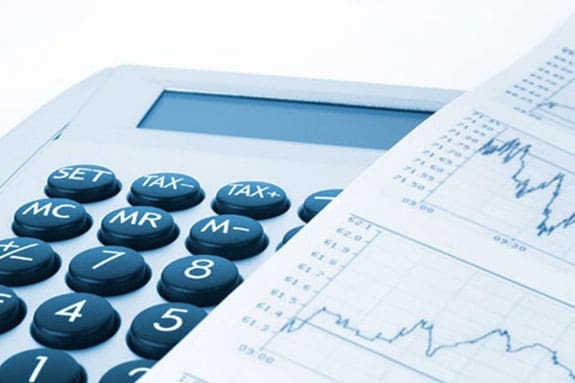After months of fan angst, Major League Baseball announced in July its(opens in new tab) plan to safely play a shortened 60-game season. It was a valiant effort, summed up in a detailed 101-page(opens in new tab) document optimistically titled, “The 2020 Operations Manual.”
About five hours before the Washington Nationals were to play the New York Yankees in the 2020 season opener, a Nats outfielder tested positive for COVID-19. And the hits — no pun intended — just kept coming. By mid-August, dozens of games had been canceled or postponed.
As Yogi Berra said, “The future ain’t what it used to be.”
Businesses are finding that to be true when it comes to budgeting. All the forward-looking planning in the world can go right into left field in the face of, say, a global pandemic. Businesses of all sizes are realizing they need to be nimbler and more flexible in their planning, hence the increased adoption of rolling forecasts.
In a previous article we covered the what, when and how of rolling forecasts. If you’re unfamiliar with the concept, it’s a good idea to check that out.
Here we’ll delve deeper into the quantitative component of that: budgeting. Specifically, we’ll examine why traditional budgeting methodologies are too rigid for startups and discuss how to gain flexibility without sacrificing accountability.
What Is a Flexible Budget?
Flexible budgets are essentially budgets that can be adjusted depending upon revenue and cost changes throughout the fiscal year, accounting for expected unpredictability. Companies first account for the fixed costs they expect, or at least costs that they don’t expect to change as the year progresses. They then allow for fluctuating variable costs, reviewing costs periodically to make real-time adjustments.
This allows for companies to accommodate its needs as factors change throughout the year, such as a high increase in demand for goods or services or a seasonal hike in labor costs. Flexible budgets demand a bit of imagination and require time spent accounting for hypotheticals, but they allow businesses to adapt to changing external factors.
Key Takeaways
- Static is out. Flexible, rolling budgets empower entrepreneurs to cope with change.
- This nimble planning process lets you adjust spending throughout the year; benefits include less overspending, more opportunities and speedier responses to changing market and business conditions.
- We provide example budgets, pros and cons and a guide to getting started.
Flexible vs. Static Budgets
Traditionally, companies spend weeks or months creating an annual budget that’s more chiseled in stone than fluid and flexible. For the personality types that tend to be drawn to finance careers, that certainty provides a blanket of security, with its solid numbers and well-documented milestones.
However, that warm and fuzzy feeling often dissipates quickly.
“Where rigid budgeting gets entrepreneurs into trouble is when unanticipated hardships or even opportunities pop up,” said John Cho, founder of a website that connects pet owners with free vet care and supplies(opens in new tab). “What happens if a great investment opportunity arises? What happens if you suddenly have to buy PPE for all of your warehouse employees? Budgets should always be a living, breathing organism that you adjust frequently.”
There is a place for static budgets when costs are largely fixed — think rent, website, insurance. However, the benefits of rigidity fade when no room is left for emergencies, opportunities and strategic shifts. Small companies and startups may even miss out on new sources of income.
The sentient alternative? A flexible budget that evolves throughout the year as key assumptions, like sales and production levels, change and you need to respond to market trends or other fluctuations that impact financial performance. Flexible budgets are especially beneficial in volatile periods or unpredictable markets.
Let’s face it: An evolving game plan beats an obsolete one.
Static vs. Flexible Budgeting
| Static | Flexible |
|---|---|
| Remains the same even if there are significant changes from the assumptions made during planning. | Adjusts based on changes in the assumptions used in the planning process. |
Pros and Cons of Flexible Budgets
Not everyone is sold on flexible budgeting. For one, it requires constant monitoring and tweaking.
Unlike a static budget where you set it once and repeat the formula, a flexible budget requires constant monitoring and tweaking — with no guaranteed rewards. The hours of analysis and modifications could be rendered futile if predicted conditions, trends or objectives change.
Michael McFall, co-founder and co-CEO of Biggby Coffee(opens in new tab) and author of Grind(opens in new tab), a new guide for entrepreneurs looking to build self-sustaining businesses, sees potential for too much wiggle room.
“What makes me a little squirrely around flexible budgets is that there can be a lack of accountability,” said McFall. “Because when you allow for changes in budget, then you are, in essence, allowing for people to maybe not live up to the commitments they made at the beginning of the year.”
Still, flexibility is incredibly important for young companies. Growth rarely happens in exactly the way your original business plan described. You need a budgeting process that can deal with that reality.
“At the end of last year, as companies were creating their budgets, no one could foresee what 2020 would look like,” said Ben Reynolds, CEO and founder of investor resource site Sure Dividend(opens in new tab). “Because of my company’s flexible budgeting, we were easily able to adapt to changing times. We like to take risks, make changes quickly and adapt to current markets and trends. A flexible budget allows us to do all of that.”
Pros and Cons of Flexible Budgeting
| Pros | Cons |
|---|---|
| Less-rigid resource allocation | Time consuming, requires more maintenance and oversight |
| Allows companies to address unpredicted conditions and circumstances, like market fluctuations and business volume | Limits ability to plan in some areas when budget is changing |
| Better enables businesses to pursue new opportunities and mitigate risk | Predictions have a shorter lifespan — months rather than quarters |
| More accurately reflects the state of finances | Less accountability to adhere to original budget |
| Accounts for unexpected expenses | |
| Better cost controls |
Wait: Better cost controls and less accountability?
Hear us out. If you’re constantly monitoring, you can reallocate funds on the fly. Maybe you spent less on facilities than expected, but new tariffs mean manufacturing is not going to make its numbers. By investing what you would have spent on utilities and in-office food service on a one-time effort to find and sign on alternate suppliers, you set that team up for more predictable costs going forward.
The key is a disciplined process to justify budget increases. When people know there’s not an iron-clad expectation to stay within a static line item, there’s temptation to constantly ask for more.
Be honest. Do executives have the stomach to say no, even when there is funding to undertake an unbudgeted project? If not, flexible budgeting may not be right for your company.
Like Yogi says, you’ve got to be very careful if you don’t know where you’re going, because you might not get there.
The Implementation Process
Whether switching to a flexible budgeting process from a static model or starting from scratch, there are keys to success.
First, identify fixed and variable costs: Fixed costs referred to expenses that rarely, if ever, change, like rent or lease payments, insurance and other set outlays. Variable costs shift based on a company’s output. Think raw materials and distribution expenses.
Some expenses will have both fixed and variable characteristics. These are occasionally referred to as “semi-variable” or “semi-fixed.” An example is a salesperson’s remuneration. Base pay is fixed, commission varies based on performance.
Categories of Expenses in a Flexible Budget
| Expense Type | Description | Examples |
|---|---|---|
| Fixed | Costs that do not change over the short-term, even if there is a shift in the amount of goods/services produced or sold. | Rent, lease payments, insurance, interest payments, website fees, certain salaries. |
| Variable | Costs that change based on the number of goods or services a company produces. | Raw materials, packaging, distribution, piece-rate labor. |
Once you identify fixed and variable costs, separate them on your budget sheet.
For sake of illustration, let’s use a very simple, three-month budget for a coffee shop as an example. Over this time period, the shop expects an average of 250 customers per day (22,750 total), each buying one cup of coffee that costs $3. That will result in revenue of $68,250.
Want to Adapt This Worksheet to Your Own Numbers
Original Budget: 100% Capacity
| Income | Amount |
|---|---|
| Gross revenue | $68,250 |
| Total costs | ($51,462.50) |
| Profit | $16,787.50 |
| Expenses | Expense Type | Amount |
|---|---|---|
| Lease payment | Fixed | $15,000 |
| Insurance | Fixed | $1,000 |
| Utilities (including internet) | Fixed | $3,000 |
| Marketing (including website) | Fixed | $3,400 |
| Wages | Fixed | $12,000 |
| Fixed Cost Amount: $34,400 | ||
| Ingredients (coffee, cream, milk, sugar) | Variable | $11,375 (an average of about 50 cents per person) |
| Supplies (napkins, cups, coffee stirrers) | Variable | $5,687.50 (an average of about 25 cents per person) |
| Variable Cost Amount: $17,062.50 | ||
This means that the variable costs of the company are equal to 25% of its net sales, using the variable cost ratio(opens in new tab), which in this case is $17,062.50 / $68,250 = .25.
It can also be calculated as per-unit variable cost over the per-unit sales cost, or $.75 / $3.
A company with high fixed costs will have a lower ratio, meaning it must earn a substantial amount of revenue just to cover fixed costs and stay in business before seeing any profits from sales.
Based on the information gleaned here — amount of fixed costs, variable cost ratio and how much variable costs change in relation to activity — you can create a budget model where fixed costs do not change and variable costs are stated as a percentage of the relevant activity measures or as a cost per unit of activity measure.
The above scenario is the initial budget assuming 100% activity. However, to see these numbers in action, let’s say, hypothetically, a pandemic hits. The coffee shop’s activity is then reduced to 70% of what was expected. As opposed to 22,750 customers, there are only 15,925, bringing revenue down to $47,775.
Pandemic Budget: 70% Capacity
| Income | Amount |
|---|---|
| Gross revenue | $47,775 |
| Total costs | ($46,343.75) |
| Profit | $1,431.25 |
| Expenses | Expense Type | Amount |
|---|---|---|
| Lease payment | Fixed | $15,000 |
| Insurance | Fixed | $1,000 |
| Utilities (including Wi-Fi) | Fixed | $3,000 |
| Marketing (including website) | Fixed | $3,400 |
| Wages | Fixed | $12,000 |
| Fixed Cost Amount: $34,400 | ||
| Ingredients (coffee, cream, milk, sugar) | Variable | $.50 x 15,925 = $7,962.50 |
| Supplies (napkins, cups, coffee stirrers) | Variable | $.25 x 15,925 = $3,981.25 |
| Variable Cost Amount: $11,943.75 | ||
But, in a happier scenario, what if the coffee shop exceeds expectations and operates at 120% of original expected activity? Now the 27,300 customers are resulting in a revenue of $81,900.
Home Run Budget: 120% Capacity
| Income | Amount |
|---|---|
| Gross revenue | $81,900 |
| Total costs | ($54,875) |
| Profit | $27,025 |
| Expenses | Expense Type | Amount |
|---|---|---|
| Lease payment | Fixed | $15,000 |
| Insurance | Fixed | $1,000 |
| Utilities (including Wi-Fi) | Fixed | $3,000 |
| Marketing (including website) | Fixed | $3,400 |
| Wages | Fixed | $12,000 |
| Fixed Cost Amount: $34,400 | ||
| Ingredients (coffee, cream, milk, sugar) | Variable | $.50 x 27,300 = $13,650 |
| Supplies (napkins, cups, coffee stirrers) | Variable | $.25 x 27,300 = $6,825 |
| Variable Cost Amount: $20,475 | ||
Note that fixed expenses and variable cost ratios didn’t change, because they don’t vary based on activity. However, variable expenses shifted considerably based on the number of customers, warranting the extra monitoring and maintenance.
Enter actual activity measures into the model after an accounting period has been completed. This updates variable costs in the flexible budget.
Then, upload the final flexible budget for the completed period into your accounting system so you can compare it with actual expenses through a variance analysis(opens in new tab).
It’s worth noting that a variance analysis tends to have two schools of thought: “higher and lower” and “better and worse.” The former looks solely at whether the actual number is an increase or decrease from the amount in the budget. The latter (and the one utilized below) takes into account the context of the variance. For instance, lower projected sales is “worse” and marked as such. A lower cost of goods sold, while a decrease, is “better” since it should result in savings for the company.
Variance Analyses: Tale of Two Coffee Shops
| Budget | Actuals (70%) | Variance | Variance % | |
|---|---|---|---|---|
| Income | ||||
| Product Sales | $68,250 | $47,775 | ($20,475) | -30% |
| Cost of Goods Sold | ||||
| Total COGS | $51,462.50 | $46,343.75 | $5,118.75 | 9.95% |
| Expenses | ||||
| Lease payment | $15,000 | $15,000 | 0 | 0 |
| Insurance | $1,000 | $1,000 | 0 | 0 |
| Utilities (including Wi-Fi) | $3,000 | $3,000 | 0 | 0 |
| Marketing (including website) | $3,400 | $3,400 | 0 | 0 |
| Wages | $12,000 | $12,000 | 0 | 0 |
| Ingredients (coffee, cream, milk, sugar) | $11,375 | $7,962.50 | $3,412.50 | 30% |
| Supplies (napkins, cups, coffee stirrers) | $5,687.50 | $3,981.25 | $1,706.25 | 30% |
| Ending Cash Balance | ||||
| Profit | $16,787.50 | $1,431.25 | ($15,356.25) | -91.5% |
| Budget | Actuals (120%) | Variance | Variance % | |
|---|---|---|---|---|
| Income | ||||
| Product Sales | $68,250 | $81,900 | $13,650 | 20% |
| Cost of Goods Sold | ||||
| Total COGS | $51,462.50 | $54,875 | ($3,412.50) | -6.63% |
| Expenses | ||||
| Lease payment | $15,000 | $15,000 | 0 | 0 |
| Insurance | $1,000 | $1,000 | 0 | 0 |
| Utilities (including Wi-Fi) | $3,000 | $3,000 | 0 | 0 |
| Marketing (including website) | $3,400 | $3,400 | 0 | 0 |
| Wages | $12,000 | $12,000 | 0 | 0 |
| Ingredients (coffee, cream, milk, sugar) | $11,375 | $13,650 | ($2,275) | -20% |
| Supplies (napkins, cups, coffee stirrers) | $5,687.50 | $6,825 | ($1,137.50) | -20% |
| Ending Cash Balance | ||||
| Profit | $16,787.50 | $27,025 | $10,237.50 | 60.1% |
Best Practices of Flexible Budgeters
Creating a budget, even one that’s not constantly evolving, can be an overwhelming to-do on the never-ending checklist facing leaders of emerging businesses. But we’d argue that it’s worth the effort. Cash is the lifeblood of any business — and allocating it effectively is integral to success.
To ease the process, McFall shared several startup budgeting lessons he’s learned over the course of his 25-year career.
1. Just do it:
While creating a budget may be an intimidating task, McFall subscribes to the aforementioned Nike slogan. And, to something a little less comparable to Nike’s messaging: You’re likely going to be pretty bad at it at first.
“In the beginning, you just have to start doing it,” he said. “You just have to start plugging numbers in, and you just have to iterate as you move forward. Look t it in the lens of that you’re going to be pretty bad at it for a while. Not for just a quarter or two. You’re gonna be bad at it for maybe one to three years. But each ear and each quarter, you should be learning things and improving the process.”
2. Practice makes (almost) perfect:
An obsession with perfection is often the root cause of budgeting procrastination. Founders have to overcome that: “There’s no way to get it perfect,” said cFall. “You have to let go of that at the beginning.”
As companies get larger, with more sophisticated finance operations, more data and more people involved, expectations should be higher.
“A company should be getting better and better,” he said. “What you want to see is the differential narrowing between the forecast that you originally made and he actual result.”
3. Don’t overcomplicate things:
The devil’s in the details, so keep the first page high level. In budgeting meetings, McFall frequently sees people getting into minutiae that have nothing to do with the overall evolution of the budget or the financial health of the company.
He is a proponent of more broad, less complex.
“I have always advocated for keeping it simple,” he said. “I think, as the entrepreneur, you have to stay a bit removed and fly at 10,000 feet, and really manage he business from a one-page perspective.”
By that he means a one-page budget overview that illustrates just about everything that’s going to happen in the organization. “From there, you can drill down and get o multiple layers of complexity,” he said. But don’t lose that high-level perspective.
4. Assign responsibility for accountability:
You may recall McFall’s trepidation surrounding accountability in flexible budgets. He advocates for an owner and a process.
“There needs to be a person, whether it’s the controller or the CFO, to be the holder of the flexible budget,” said McFall. “We have people where it’s their job [to decide if] there is justification for somebody to change the budget. It’s a whole process they have to go through to ensure accountability.”
Facilitate Flexibility With NetSuite Planning and Budgeting
Adaptability is a strength. After a disastrous start to the 2020 season, the MLB was forced to regroup. Now, the league is looking to tweak its plan(opens in new tab) to adopt best practices from other sports, address shortcomings and better fit the changing circumstances. Which just goes to show, it ain’t over till it’s over.
The budgeting process doesn’t have to be excessively time-consuming. Instead of enduring the cumbersome time-suck of using standard spreadsheets, software like NetSuite Planning and Budgeting offers the advanced capabilities required to create flexible budgets that meet your needs. Companywide financial data is kept in one centralized and up-to-date location, offering greater visibility over financial plans, forecasts and budgets. This also makes budget monitoring and maintenance an easier and more collaborative process.
In addition, NetSuite makes it possible to run what-if scenarios to help you see what could happen in the best- and worst-case scenarios. It also includes predictive analytics and planning capabilities that let you compare various situations ad hoc. Dashboards make it easy to dig deep into areas like budget, forecasts and actuals to glean detailed insights about business performance and better inform the decision-making process.









